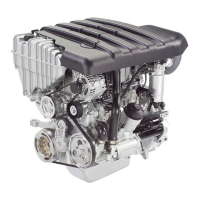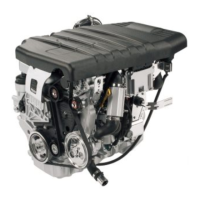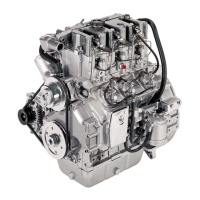MR 700
21
Ed. 3 - 2012_11
English
ENGINE STORAGE
If the engine is left idle for prolonged
periods, check the possible conditions
of conservation in relation to the storage
area and the type of packaging.
Avoid any environment exposed to damp-
ness or to the inclemency of weather.
The manufacturer supplies the engine
with a protection treatment which is valid
for 6 months from the delivery date.
The staff carrying out any type of
intervention throughout the life of the
engine should have precise technical
skills, specic abilities and experiences
acquired and acknowledged in this sec-
tor. The lack of these requirements may
cause damages to people’s safety and
health.
VM Motori recommends that this pro-
tection procedure is only carried out
by VM-authorised personnel.
– All packaging components should
be disposed of in accordance with the
legislation in force in the country where
disposal takes place.
The protection procedure is only
considered complete when all the fol-
lowing tasks have been performed:
1) protection against external corro-
sion
2) protection against internal corro-
sion
3) packaging and storage
This procedure is valid for the follow-
ing engine situations:
• on a vehicle
• on a pallet
For engines on pallets, it is neces-
sary to install the following accesso-
ries for engine start-up:
• battery
• fuel tank
• cooling radiator (for liquid-cooled
engines only)
• command belt for the alternating
current generator
• command belt for the water pump
(for liquid-cooled engines only)
1) EXTERNAL PROTECTION
UNPAINTED SURFACES: the unpaint-
ed metal components and surfaces
(for instance the engine handwheel)
must be protected with “FL MECA
FLUID / P118V” anticorrosion oil.
RUBBER COMPONENTS: unpainted
manifolds and pipes must be pro-
tected with talcum powder. Check the
tightening of the relative xing clips.
DRIVE BELTS: after applying the
internal protection, remove the belts
and put them into storage. Protect
the surfaces of the metal pulleys with
“FL MECA FLUID / P118V” spray.
ENGINE OPENINGS: Seal all the
engine openings, including the
exhaust. Use cardboard, plywood or
metal covers, making sure they do
not leave behind any fragments of
material. All the engine openings (e.g.
air suction ducts or turbocharger air
inlet) must be protected with cov-
ers or guards to prevent the entry
of solids, liquids or dusts that delay
the evaporation of the anticorro-
